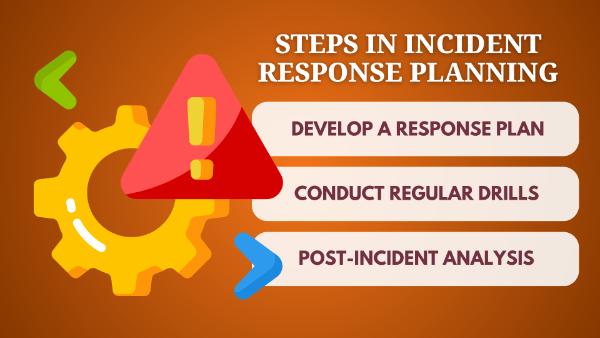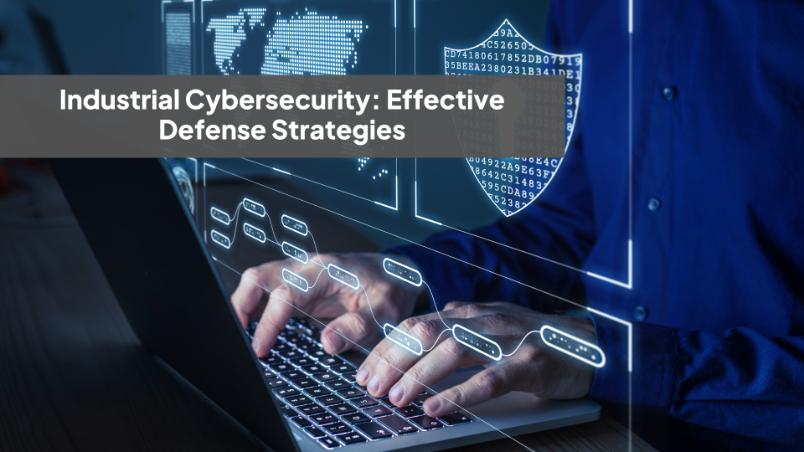Be it industries in manufacturing and energy or those in transportation and utilities, most are substantially dependent on complex networks of connected systems that help manage operations with efficiency.
This exposes many vulnerabilities that are opened up through this interconnectedness. Therefore, industrial cybersecurity is critical to protecting these infrastructures from cyber threats, operational disturbances, financial losses, and risks to national security.
In that respect, the following effective defense strategies are defined in the context of industrial cybersecurity: risk assessment, threat detection, access control, incident response, and continuous improvement.
Full Risk Assessment
Identifying Vulnerabilities
Therefore, an effective risk assessment is always the starting point for any cybersecurity strategy. The identification and cataloging process shall include all kinds of hardware, software, and network components within the industrial environment.
Understanding the potential vulnerabilities of each asset is crucial. These vulnerabilities could include outdated software, unpatched systems, weak network configurations, or even insider threats. Implementing industrial cyber security solutions can help address these vulnerabilities effectively. It helps manage data safely.
Prioritization of Risks
Not all vulnerabilities are equal with respect to risk. The difference in risk depends on the possible impact on operations, potential financial effect, and how likely it is for exploitation. Organizations can address and prioritize vulnerabilities based on their impact on business operations, financial implications, and likelihood of exploitation.
One useful tool in prioritizing is the risk matrix. It is a diagrammatical method that visualizes threats by plotting them with their magnitude and probability, thereby ranking them. This gives a better view of the major threat exposures and where to concentrate efforts.
Regulatory Compliance
Many industries need to apply specific regulations and standards, like the NIST Cybersecurity Framework, ISO/IEC 27001, or the IEC 62443 series for security in industrial automation and control systems.
It is the application of such standards that not only reduces risks but also provides proof to stakeholders and regulators that best practice concerning information security is taken care of.
Advanced Threat Detection
- Intrusion Detection Systems (IDS): The intrusion detection systems are essential to surveillance over the network traffic and identification of suspicious activities that may indicate a cyber attack. Such systems analyze the incoming and outgoing traffic patterns for anomalies in the traffic that could present threats.
- Leverage Artificial Intelligence and Machine Learning: Artificial intelligence and machine learning technologies have made a difference in threat detection. Such sophisticated systems can analyze tremendous amounts of data in real time and learn to recognize patterns, predict probable threats with an extremely high degree of accuracy.
- Continuous Monitoring and Real-Time Alerts: Continuous monitoring is key to a sound security posture. Real-time alerting enables an organization to quickly respond to a threat, should one be identified, and provides the least amount of damage.
Robust Access Control
Multi-Factor Authentication (MFA)
It provides this additional layer of security by requiring users to provide multiple forms of verification to gain access to critical systems. This would include something the user knows, something the user has, and something the user is. MFA hugely minimizes the probability of unauthorized access, even in the case where the credentials are compromised.
Role-Based Access Control (RBAC)
It is also referred to as Role-Based Access Control because it essentially limits access to systems based on the role of the user within the organization. This generally means that by providing permission depending on the job responsibilities of an employee, access will be limited to information and systems needed in the performance of roles.
This tenet of least privilege reduces the possibility of an insider threat and limits damage in case an account is compromised.
Regular Audits and Access Reviews
Regular auditing and reviewing of access are critical to access control’s effectiveness. This means that perhaps periodically, the level of access of users is checked to establish whether it is still relevant.
The removal of access for those people who have moved into other roles either within or left the organization is a means to prevent unauthorized access, hence avoiding possible security breaches.
Incident Response Planning
- Developing a Response Plan: An effective incident response program describes how and what an organization should do once a cybersecurity incident has been identified. It should include roles, responsibilities, communication protocols, and specific actions for containment, eradication, and recovery.
- Conducting Regular Drills and Simulations: Regular exercises and simulations are conducted to keep the organization prepared in case of an actual cyber incident. Simulating different types of attacks, such as ransomware or phishing, will enable teams to practice responses to highlight gaps in a plan.
- Post-Incident Analysis: This would entail going through what happened, how the response to it was done, and the things that can be improved. Lessons learned from the analysis should be applied in the updating of the incident response plan and improvement of overall security measures to be better prepared for future incidents.

Continuous Improvement and Education
Regular Software Updates and Patch Management
Keeping software and systems updated is one of the basic principles of industrial cybersecurity. Regular updates and patch management significantly help close security gaps and address vulnerabilities that attackers could exploit.
Ensure there is a system in place to update all systems, including third-party applications and legacy systems, without exception.
Security Awareness Training
One of the most significant cybersecurity risks is still human error. Regular security awareness training deals with informing workers about the newest threats, such as phishing and other social engineering attacks, teaching them how to maintain security best practices.
This aids in the development of a culture of cybersecurity awareness within an organization and considerably reduces the likelihood of successful attacks.
Engaging with the Cybersecurity Community
Staying current with trends, threats, and best practices in cybersecurity is extremely important. Contributing to and being part of the broader cybersecurity community through forums, conferences, and industry groups, for instance, can enable entities to leverage shared knowledge and benefit from others’ experiences.
Collaborative efforts may, in turn, yield new defense strategies or technologies that improve security overall.
Conclusion
Cybersecurity in industry is still the biggest aspect of running modern business operations, as it keeps particularly vital systems safe from sophisticated evolving cyber threats.
Implementing a comprehensive strategy that includes risk assessment, threat detection, access control, incident response planning, and continuous improvement is crucial for defending against cyber-attacks.
This is a critical consideration to ensure continuous industrial operations and business continuity in an evolving digital environment. These strategies protect against losses and foster stakeholder trust in the future security of industrial enterprises.
FAQs
- What are the most important constituents of any industrial cybersecurity strategy?
It contains some of the most critical elements, including comprehensive risk assessment, threat detection in advance, robust access control measures, incident response planning, and best practices for continual improvement.
- How does multi-factor authentication strengthen industrial cybersecurity?
It reinforces security, hence making it quite impassable for an unwanted user who might have stolen the credentials to access any critical system. This additional layer provides multiple verification forms before access is granted, therefore greatly reducing the occurrence of unauthorized access and potential breaches.
- Why is continuous monitoring necessary in industrial cybersecurity?
Continuous monitoring provides near real-time situational awareness of the security state of the network, allowing timely threat detection and response. It’s proactive in that it ensures no situation can spiral out of control while at the same time maintaining continued protection of the critical infrastructure.































